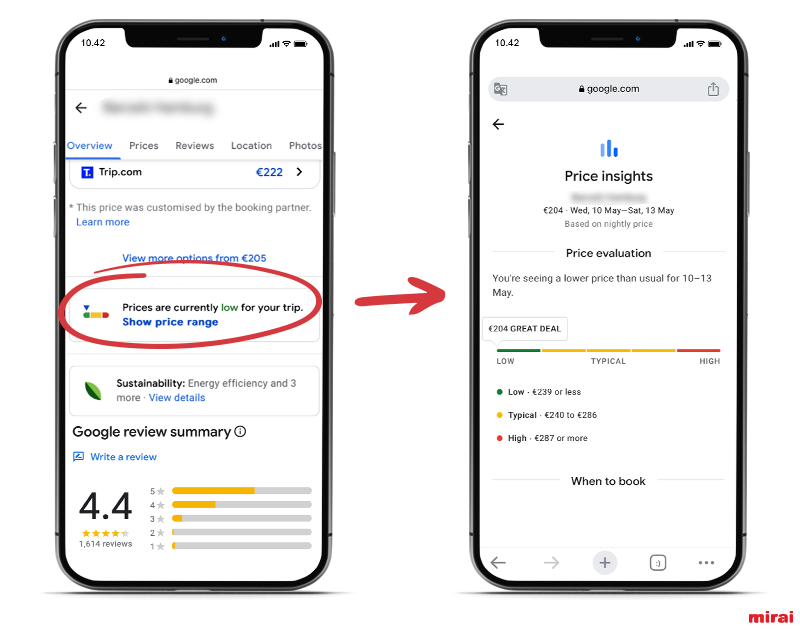Over recent years, the Google Hotels metasearch engine has achieved a market penetration of almost 85%, and has become a vital channel for helping hotels increase their direct sales.
NB: This is an article from mirai, one of our Expert Partners
From the traditional Google Ads for advertising to new functionalities such as Free Booking Links, Destination Insights, or the recently revamped Trends, Google now offers a great choice of tools and resources to help hotels make the most of all their sales potential.
Subscribe to our weekly newsletter and stay up to date
This article explains a number of different tools available to you through your hotel’s profile in Google Hotels that you probably haven’t heard about, but which can help you get a much clearer understanding about both your own distribution strategy and that of your competitors.
Tool 1 – Price Range
What is it?
This is a tool that analyzes the price for the dates you select in the calendar, and then categorizes it, based on whether Google considers it to be a lower or higher price than normal for those dates or within the price range Google considers normal. Each of these categories (low, normal and high) is associated with a price range that can really help you assess your price positioning.
How can it help me?
It lets you see what users might be thinking about your pricing strategy, and get a better insight on your current rate positioning for a selected date in the future. If you have a pick-up rate that you think is unusually high or low and you’re worrying that this might be due to your pricing, this Price Range information can give you some initial pointers that will then allow you to carry out a much deeper analysis of your strategy. You can also monitor how aggressive your competitors are being compared to their normal pricing.
Where can I find it?
In the “Summary” section of your Google Hotels profile, just below the rates panel. It will be displayed as “See price trends” or “Show price range”. Click on the option to view a drop-down screen with the following information:
Tool 2 – Price History
What is it?
This is a tool that you can really get a lot out of, both for monitoring your own hotel performance and the competition. Price History basically shows you how your minimum online rate has changed over the last 30 days. This helps you analyze whether you or your competitors are implementing an incremental pricing strategy or an inverse pricing strategy.
There is one important thing to remember. This is an analysis of your online prices, not the price on your own website. That means that if you don’t have 100% control over the competitiveness of your direct channels, you probably also don’t have much control over this minimum online price, meaning that the graph will be highly influenced by any weaknesses in your competitiveness over the last 30 days.






